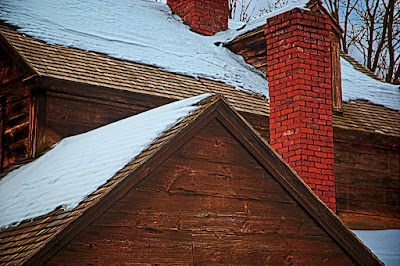Take your hand and cover the top one third of today's image. Without that third of the image it doesn't really "tell" the complete story, right? Without seeing where the water comes from it's sort of blah. Looking at it you can't tell if it's a lot of a very small stream or a little of a bigger stream. Today's image "almost" qualifies as a monochrome print. It wouldn't take much to suck the blues out of the shot and leave only black, shades of grey and green. One of the other things you've probably noticed is that it's pretty dark. The light "shines" down through the center of the image, drawing the eye through the image. One of the big things to watch out for is closing down the top of a shot like this. The overall image has a typical very light vignette, except...! The vignette has been removed from the top of the shot. Even though the vignette is pretty subtle on the lower half of the image it was too much for the top half. All along the top of the top, everything was lost. The rocks on the left side, the center flow of water and the sunlight on the right were just black. The "halo" along the top of the rock in front of the pool is just that. I looked at it and thought it was something I did while bringing out the texture of the moss on the rock. Nope! It's actually the mist from the water falling into the pool. I checked the original image, the finished image and several steps along the way. It's there all the way through. To find out about how today's image was "brought to life", hit the "read more".
Read more!
Heading to Belfast!
4 months ago

















